
Für eine deutsche Übersetzung dieser Seite einfach die Brandenburger Flagge anklicken
 |
Click the Brandenburg Flag for a German translation Für eine deutsche Übersetzung dieser Seite einfach die Brandenburger Flagge anklicken |


|
Bavaria State |
Vacation 2010September 16, GermanyRothenburg ob der Tauber |
Rothenburg ob der Tauber |


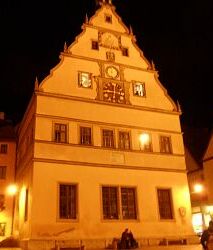 |
After the tour with the night watch-man (left), we spent the night at the hotel
Zum Breiterle,
named after the horsemen who once protected town and country (right and below). The next morning, we took another tour in daylight. Rothenburg is not very big, but full of sights and everywhere one bumbs into hundreds of years of history. |
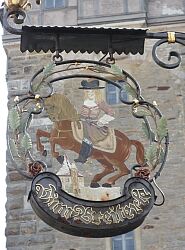 |

|
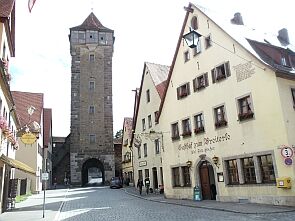 |
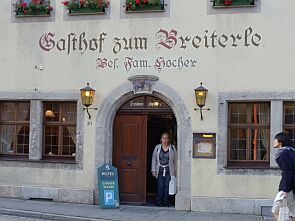 |

|

| Join us on a tour through Rothenburg ob der Tauber |
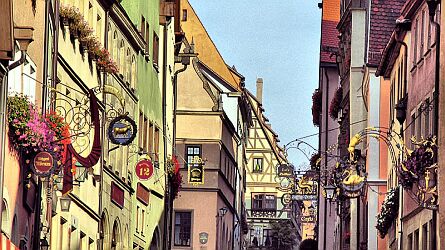 |
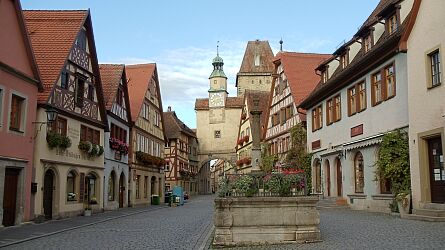
|
|
Our hotel was located near the medieval wall, overlooking Rödergasse, one of the many picturesque streets.
|
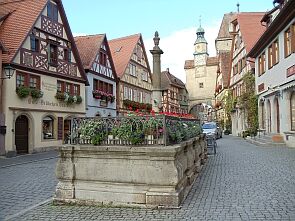 |
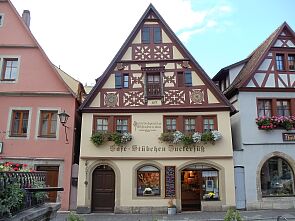 |

|
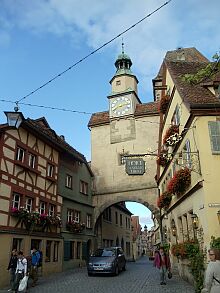 |
 |
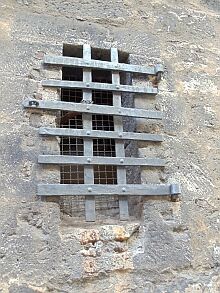 |

|
|
The city of Rothenburg originated in late 12th century. The inner wall was constructed at that time. Most of today's town is outside that old
boudary. While the newer wall, built in the 16th century still exist (and is one of the town's main attractions), The only remains of the old fortification
are three towers and this small piece of wall and parapete walk, called Röder's Bow (above).
|
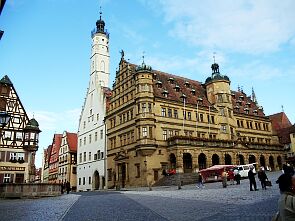 |
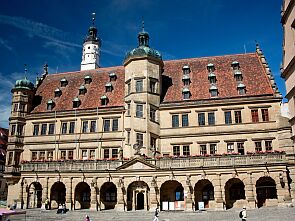 |
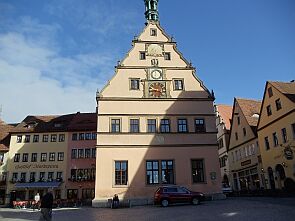
|
 picture above borrowed from gittus.com.au; picture below left borrowed from zug55
picture above borrowed from gittus.com.au; picture below left borrowed from zug55
|

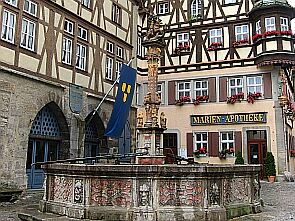 |
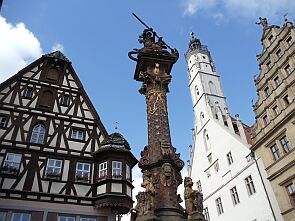 |
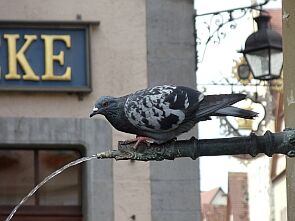
|
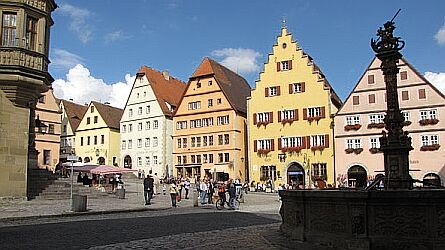 |
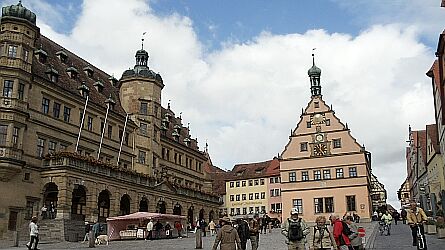
|
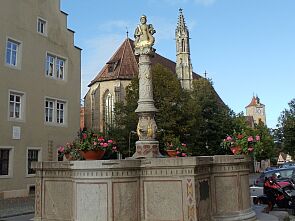 |
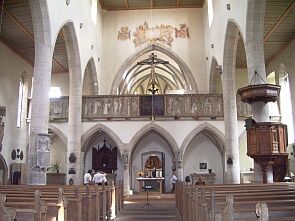 |

|
Rothenburg is also famous for its churches. One of he oldest ones is the
Franciscan Church (above),
built in 1309. Largest church is the Church of St. Jacob. Work on this church started in 1311, but it took 174 years, until 1485, to finish it. |
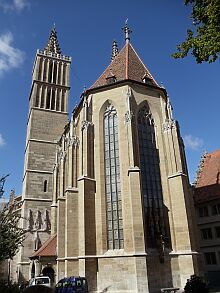 |
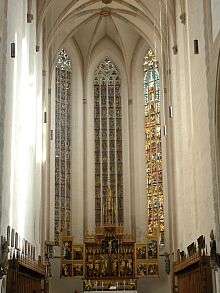 |
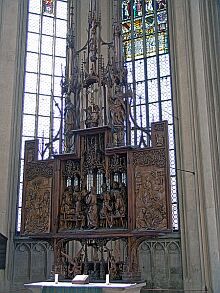 |
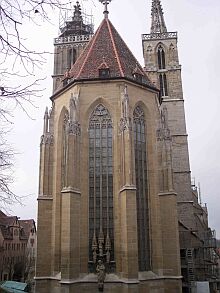
|
| The Church of St. Jacob is most famous for its altarpiece, the Holy Blood Altar (bottom left), created in 1505 by Tilman Riemenschneider. There is also some impressive artwork on the outside (bottom right). |
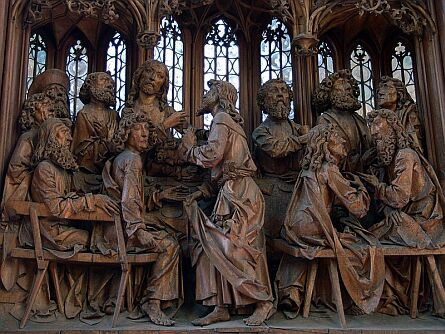 |
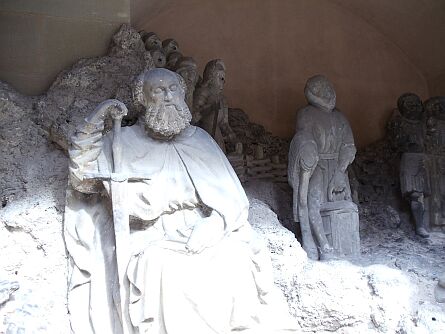
|

| Of course, the town is not only art and history. It is also home to 11,000 people and outside the historical center, it looks like any other town (just a little bit cleaner and nicer). |
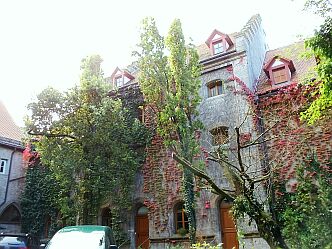 |
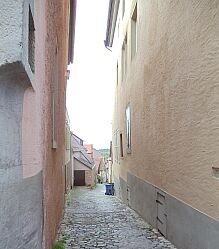 |

|
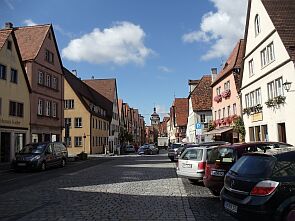 |
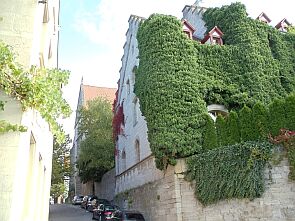 |

|
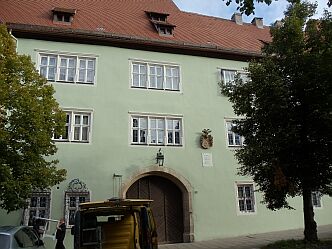 |
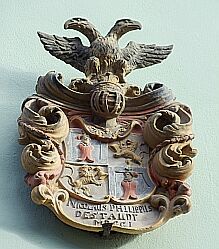 |
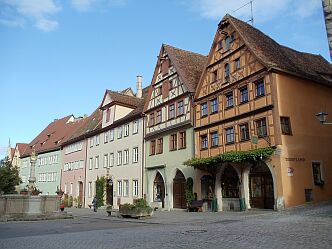
|
|
This house has been occupied by the same family since 1701! Bavaria is famous for its hospitality. And we sure met a lot of interesting people. |
 |
 |
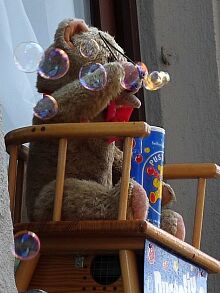 |
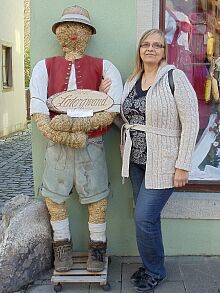
|

We have so much more about this beautiful town that we can't fit it on one page.
 At the next to pages, we invite you into Rothenburg's Historical Museum and on a stroll along the city wall.  Just follow the link below. |

 |
Click the left turn sign to get back to the previous page. Or click the right turn signal to dig deep into Rothenburg's history. |

|


 Back to Vacation 2010 |
 Back to English Main Page |
 Back to Start Page |